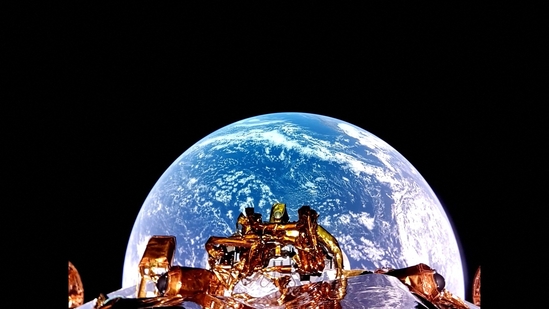Blue Ghost makes a soft landing on Moon: 5 facts about ‘Ghost Riders in the Sky’
As part of NASA’s Commercial Lunar Payload Services (CLPS) initiative, Blue Ghost Mission 1 delivered 10 scientific and technological instruments to the Moon.
Firefly Aerospace’s Blue Ghost lander successfully touched down near Mons Latreille, a volcanic feature within Mare Crisium, a large basin in the Moon’s northeastern quadrant, on Sunday.

As part of NASA’s Commercial Lunar Payload Services (CLPS) initiative, Blue Ghost Mission 1 delivered 10 scientific and technological instruments to the lunar surface.
Also Read | Blue Ghost landed on Moon today: How much does it cost?
With NASA’s backing and support from the Artemis program, private companies are taking on a bigger role in lunar exploration, aiming to develop a sustainable lunar market.
Firefly became the second private company to achieve a soft Moon landing, following Houston-based Intuitive Machines, whose Odysseus lander made an uneven but successful touchdown last year. Previously, only five nations—the Soviet Union, the U.S., China, India, and Japan—had accomplished soft lunar landings.
Also Read | What instruments will NASA’s Lunar Trailblazer use to search for water on Moon?
Mare Crisium, once an ancient asteroid impact site, formed around 3 billion years ago when volcanic eruptions filled the basin with basaltic lava. Firefly’s payloads gathered crucial data on the Moon’s regolith, geophysical properties, and interactions between solar wind and Earth’s magnetic field.
Also Read | NASA launches mission to test technology for long-term human stay on Moon
5 facts about ‘Ghost Riders in the Sky’
- Journey and landing: Launched on January 15, Blue Ghost spent around 45 days travelling to the Moon, conducting system health checks and initiating scientific operations. It successfully landed in Mare Crisium on Sunday and will operate its payloads for a full lunar day (14 Earth days).
- Eclipse and lunar sunset observations: On March 14, Firefly will capture high-definition images of a total eclipse, where Earth blocked sunlight from reaching the Moon. On March 16, Blue Ghost will record the lunar sunset, gathering data on how solar activity causes lunar dust to levitate, a phenomenon first observed by Apollo 17 astronaut Eugene Cernan.
- Scientific contributions: Blue Ghost’s payloads will contribute to lunar research through groundbreaking experiments, including testing regolith collection, Global Navigation Satellite System capabilities, radiation-resistant computing, and lunar dust mitigation. These studies aimed to support future lunar missions and provide insights into space weather’s effects on Earth.
- Design and stability: Standing 2 metres tall and 3.5 meters wide, Blue Ghost was engineered for stability with shock-absorbing feet, a low centre of mass, and a broad footprint. It incorporated flight-proven technologies from Firefly’s launch and orbital vehicles, ensuring cost efficiency and reliability.
- Final descent and landing: In its last hour of descent, Blue Ghost used vision-based terrain navigation and hazard avoidance to assess its position, identifying craters, slopes, and rocks before selecting a safe landing spot. Its Reaction Control System (RCS) thrusters fired as needed, ensuring a controlled and smooth landing.






